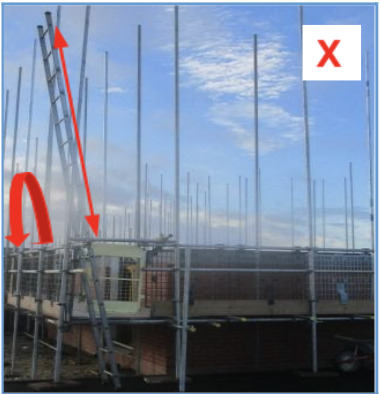January 2022
Over Extended Ladders
It is still quite common that access/egress to low level independent scaffolds is provided via ladders positioned to the external face of a scaffold elevation, this can be typical for new build housing projects where scaffolds are erected progressively with the changes in lift heights requiring adaption to the access points.
Where scaffolds are raised in stages as for instance is the case with progressive new build homes, the use of over long ladders should be avoided at the single lift stage.
The use of over long ladders to access low level scaffolds could potentially result in the ladder tipping and rotating from position due to the projecting weight of the ladder above its supporting tube.
Where scaffolds are been raised in stages shorter ladders are preferred.
When fixing a single lift ladder at the first lift consideration should be given to supporting the ladder at a higher level to prevent the ladder from tipping. This support could be achieved by supporting the ladder at guardrail height.
The NASC recommends that external ladder access is restricted to the first and second lift only (with maximum height of 4.7m, which would be a 2.7m base lift with an additional 2m lift).
You can download the full PDF here.

